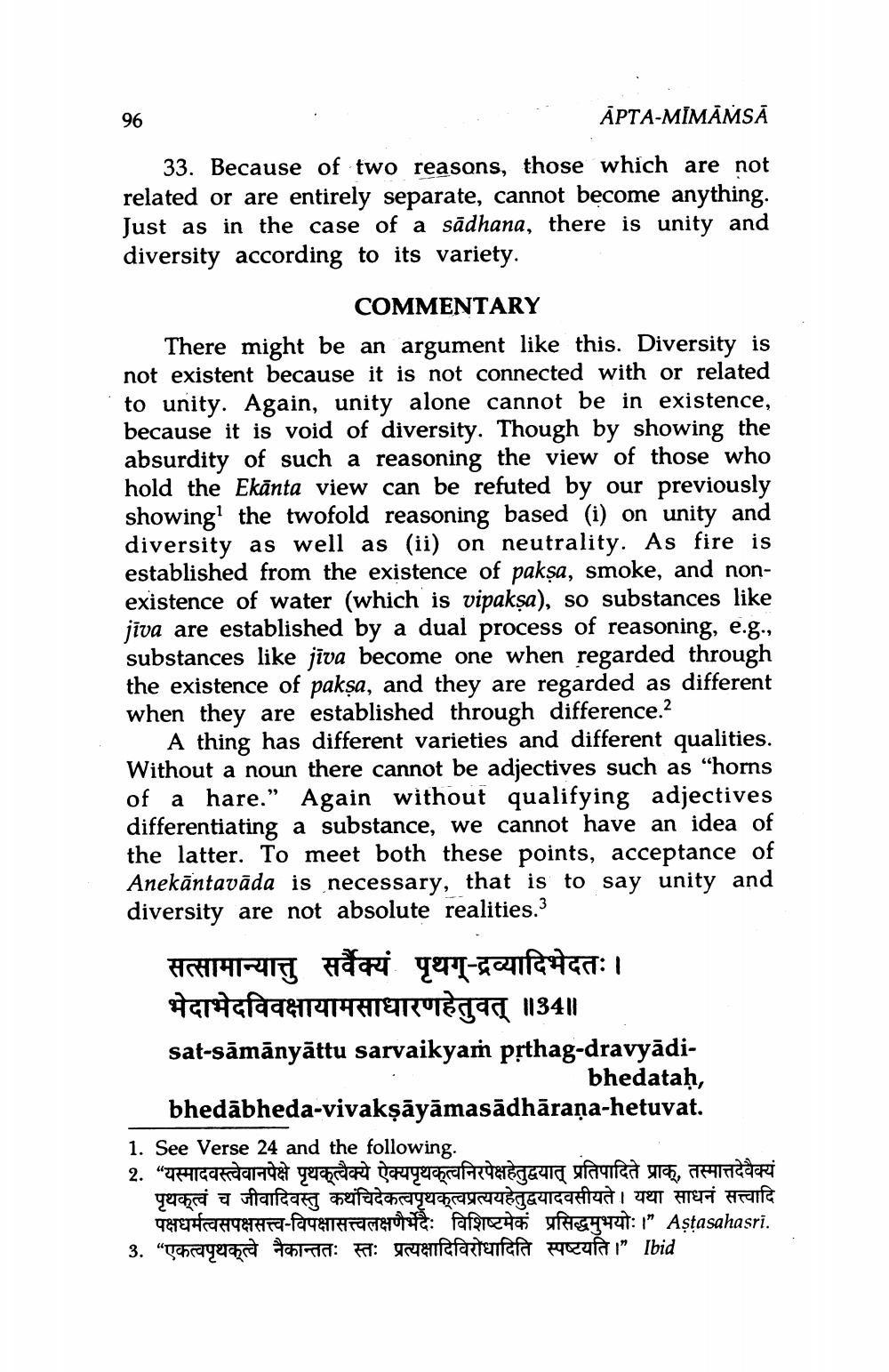________________
96
APTA-MĪMĀMSĀ
33. Because of two reasons, those which are not related or are entirely separate, cannot become anything. Just as in the case of a sādhana, there is unity and diversity according to its variety.
COMMENTARY There might be an argument like this. Diversity is not existent because it is not connected with or related to unity. Again, unity alone cannot be in existence, because it is void of diversity. Though by showing the absurdity of such a reasoning the view of those who hold the Ekānta view can be refuted by our previously showing the twofold reasoning based (i) on unity and diversity as well as (ii) on neutrality. As fire is established from the existence of paksa, smoke, and nonexistence of water (which is vipakşa), so substances like jīva are established by a dual process of reasoning, e.g., substances like jiva become one when regarded through the existence of paksa, and they are regarded as different when they are established through difference.2
A thing has different varieties and different qualities. Without a noun there cannot be adjectives such as "horns of a hare.” Again without qualifying adjectives differentiating a substance, we cannot have an idea of the latter. To meet both these points, acceptance of Anekāntavāda is necessary, that is to say unity and diversity are not absolute realities.3
सत्सामान्यात्तु सर्वैक्यं पृथग्-द्रव्यादिभेदतः। tarafa HR414HTER TÈCET 1134|| sat-sāmānyāttu sarvaikyam prthag-dravyādi
bhedataḥ, bhedābheda-vivakṣāyāmasādhāraņa-hetuvat. 1. See Verse 24 and the following. 2. “यस्मादवस्त्वेवानपेक्षे पृथक्त्वैक्ये ऐक्यपृथक्त्वनिरपेक्षहेतुद्वयात् प्रतिपादिते प्राक्, तस्मात्तदेवैक्यं
पृथक्त्वं च जीवादिवस्तु कथंचिदेकत्वपृथक्त्वप्रत्ययहेतुद्वयादवसीयते। यथा साधनं सत्त्वादि
THETHYS Hra-fa HTH FIFTET: Pafgreitt utsy927:1" Astasahasri. 3. "ehrane art Atcha: 7: tenifefartenfafa paruldı” Ibid




